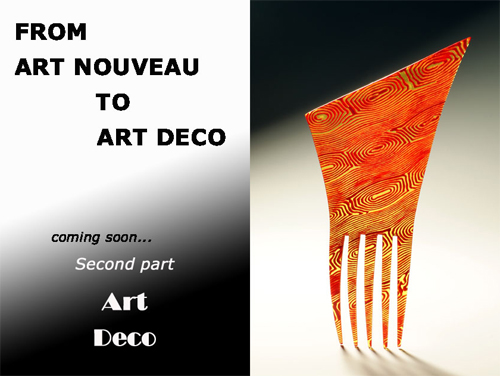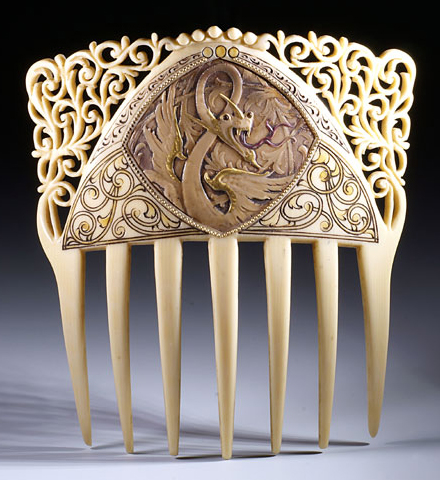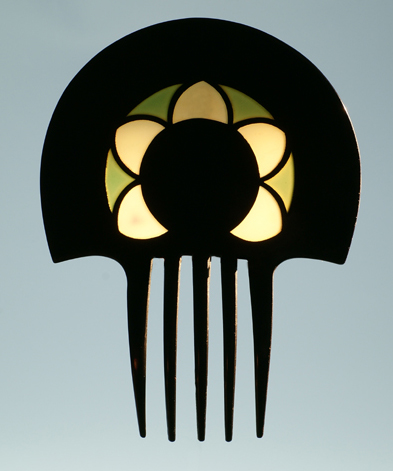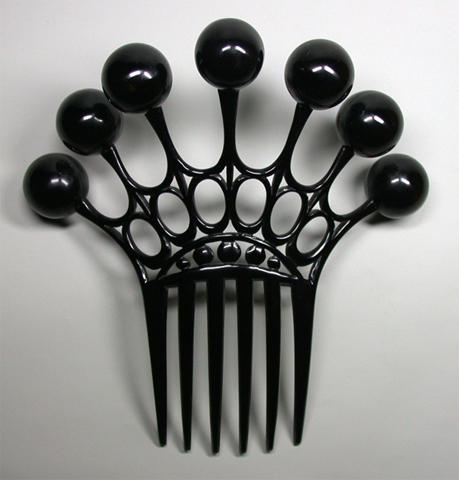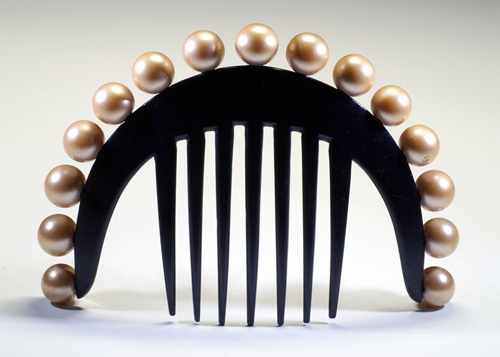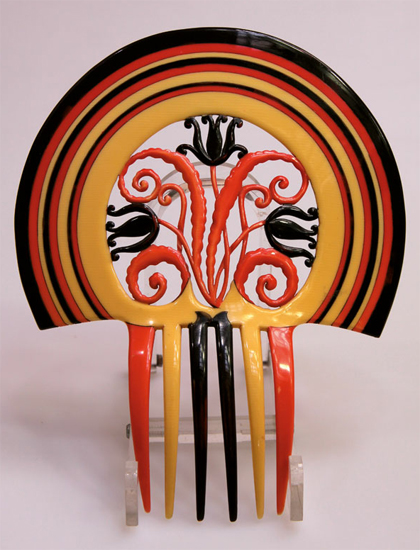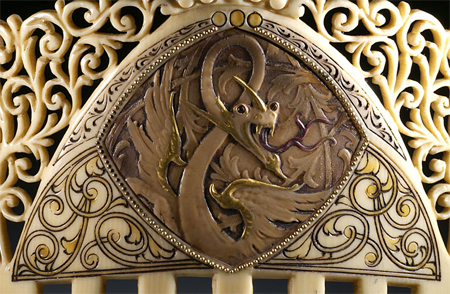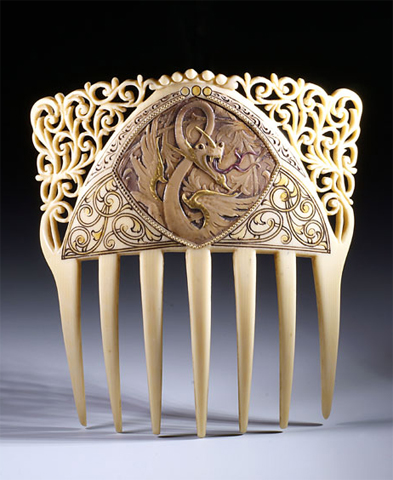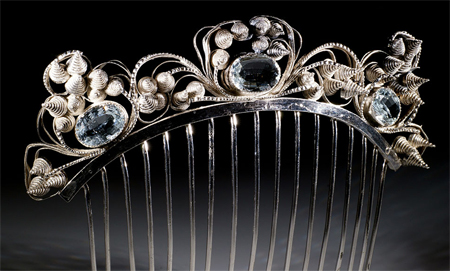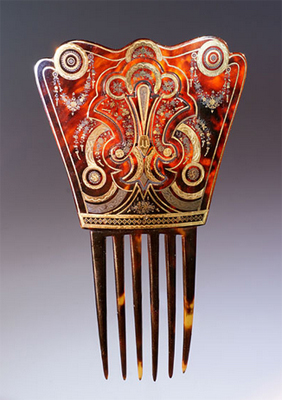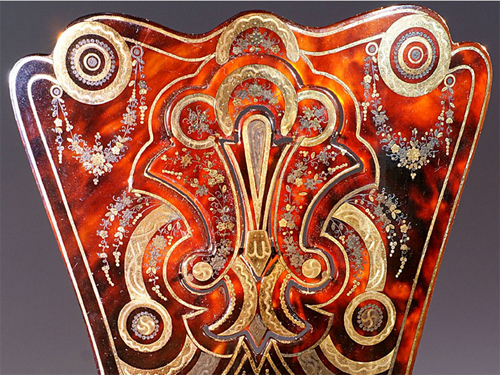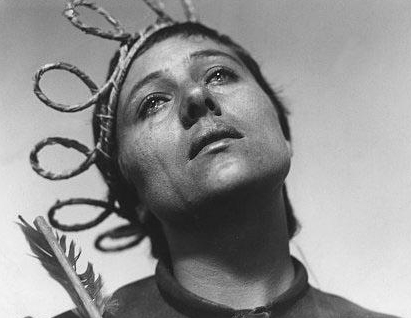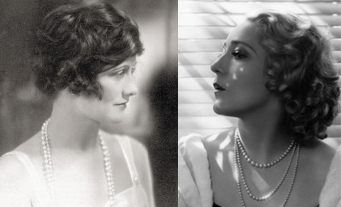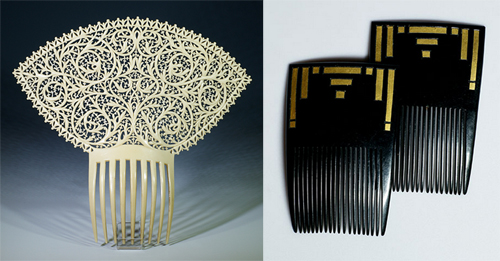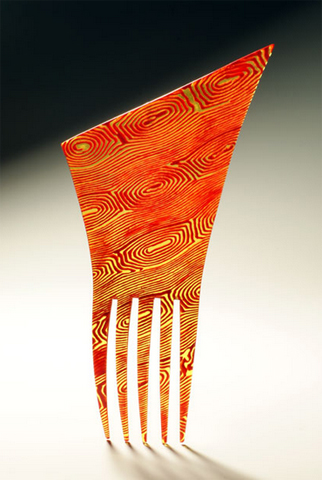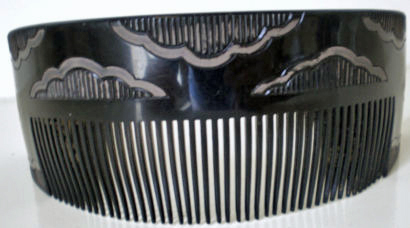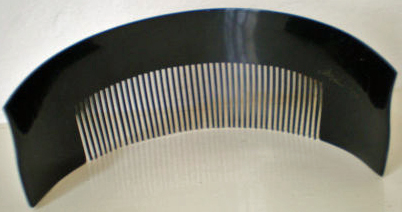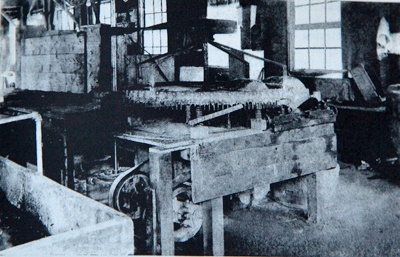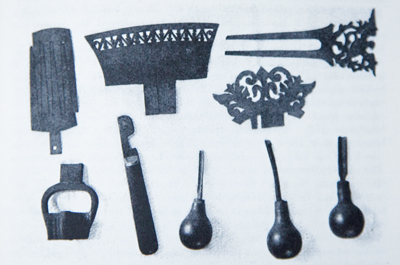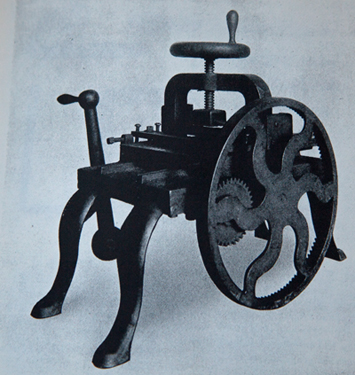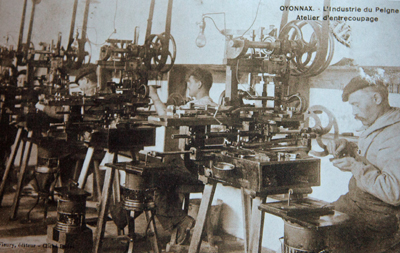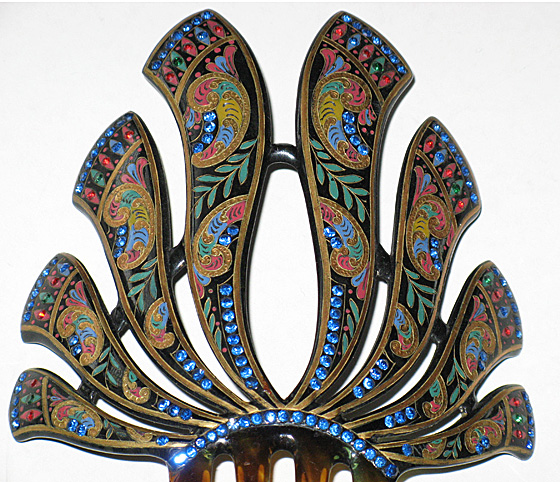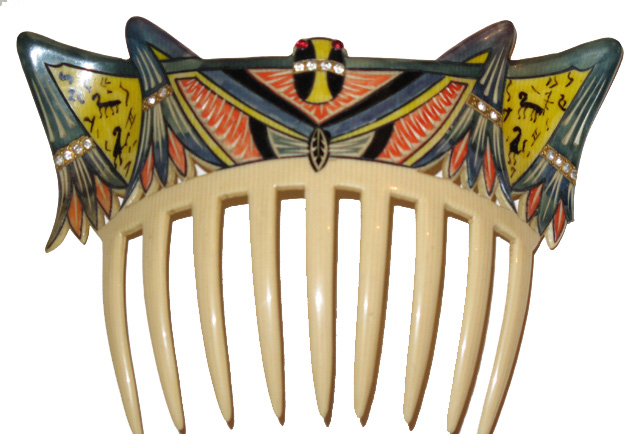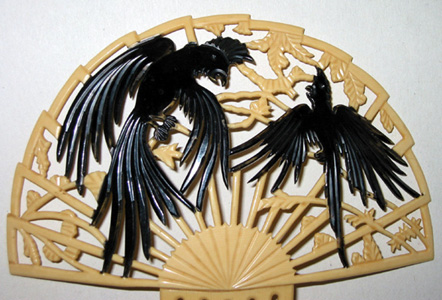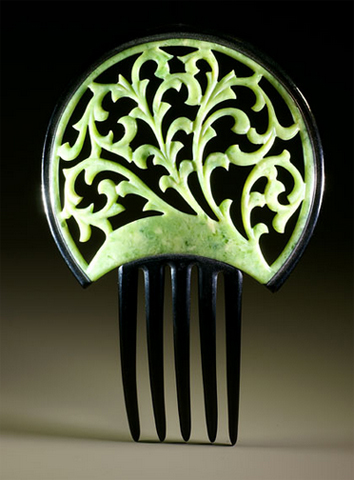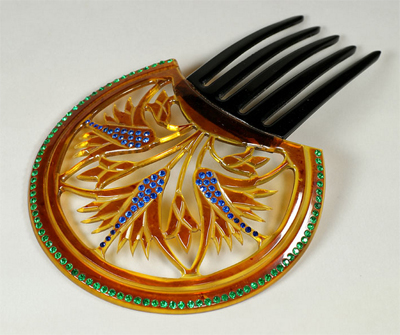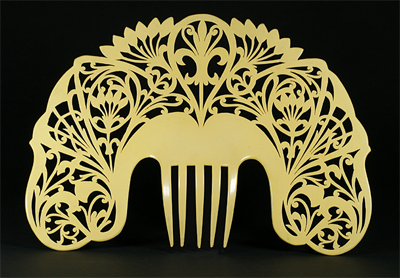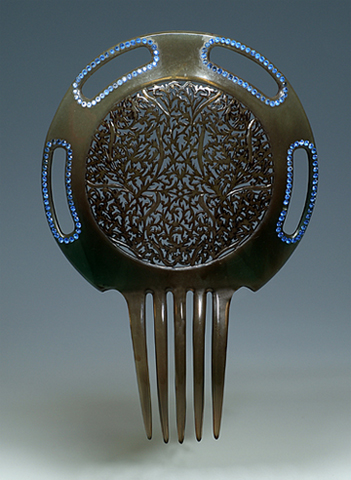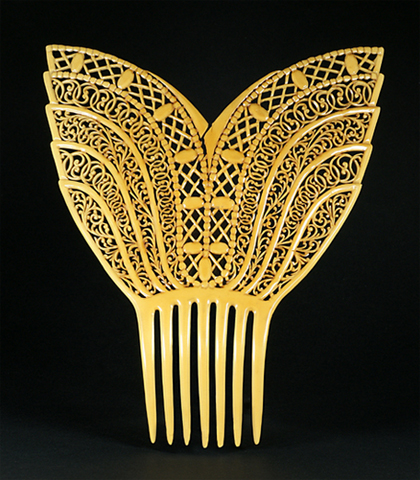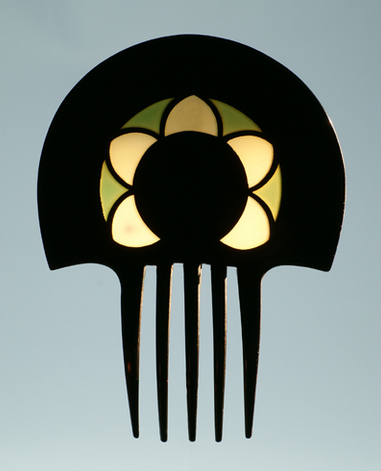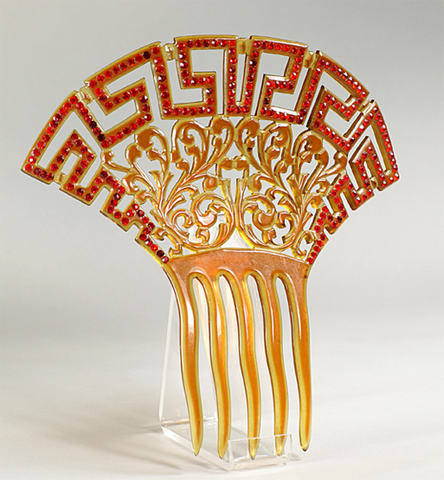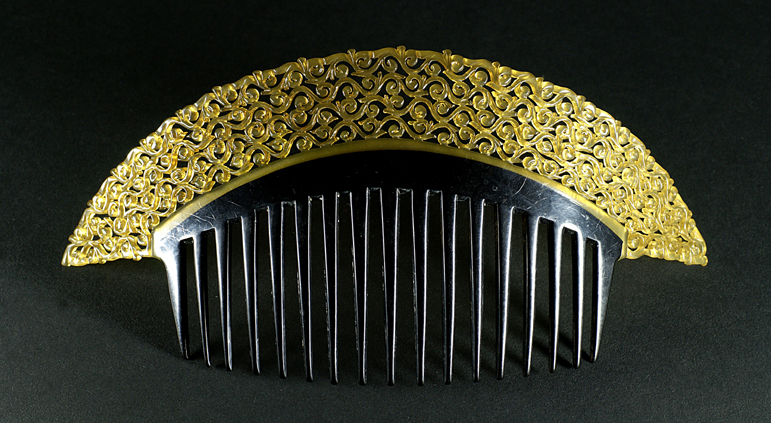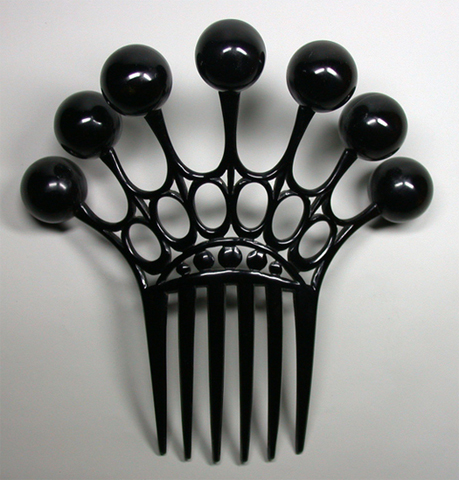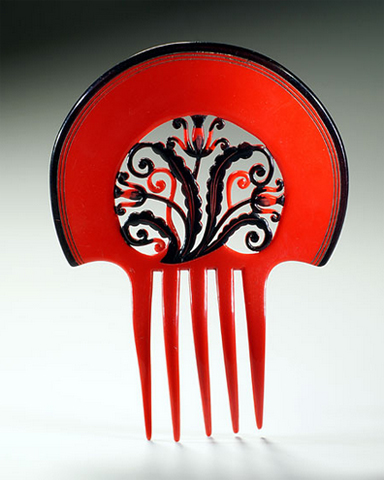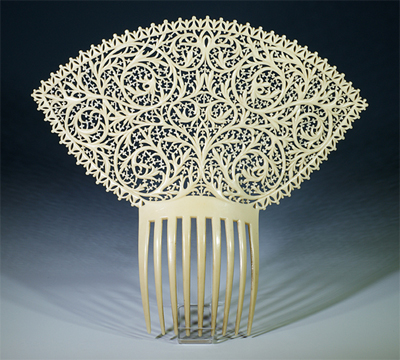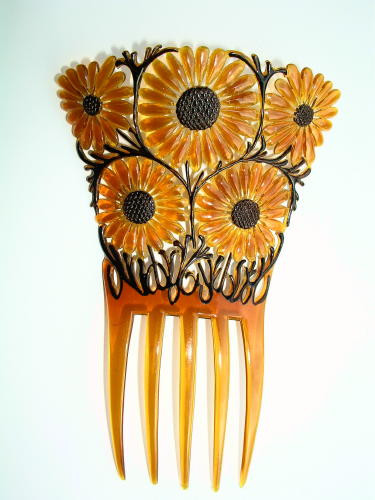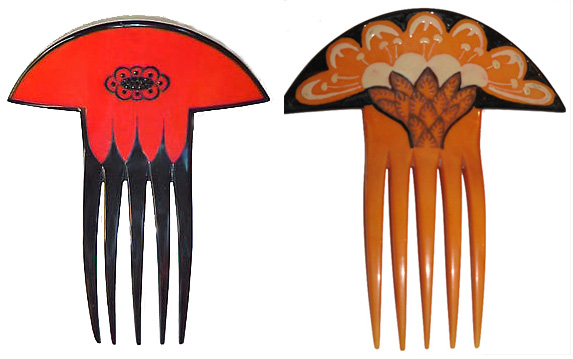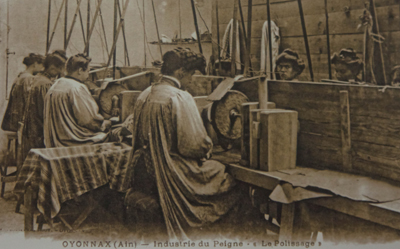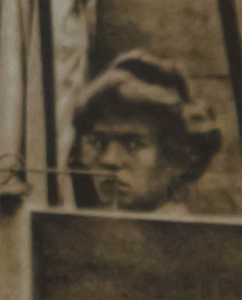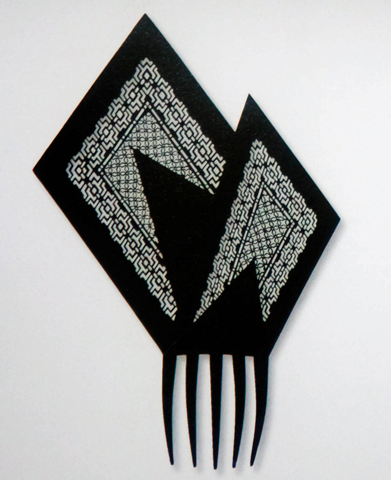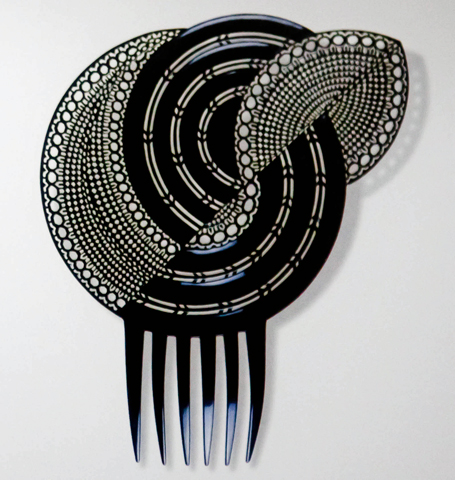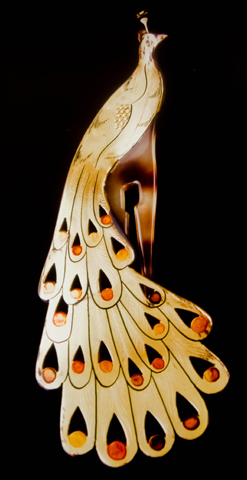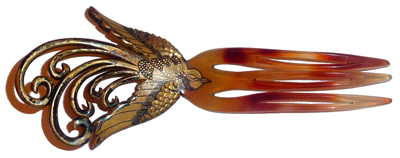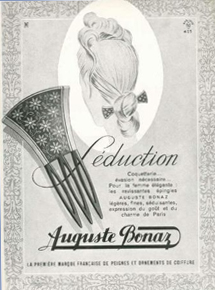The Creative Museum just acquired another masterpiece by Auguste Bonaz.

Made c. 1920 in Oyonnax, five medallions of painted leaves and rhinestones rest in the middle of a curved frame. The medallions are held in place by vertical lines.

I thought this might be a good opportunity to peruse some of the Creative Museum’s other Bonaz combs. Here are two combs from his Art Nouveau period, c. 1910.
Two delicately carved and painted peacocks hold a green medallion in a comb shaped for their tails. How lovely it would look when worn with an embroidered dress.

There are gold accents on this dragon’s wings and head, and his eyes are made of yellow paste stones.

In his Art Deco period, c. 1920…
I call this comb “Every Cloud Has a Silver Lining.” Tines are used in a uniquely imaginative way, depicting both the rain pouring from the clouds, but also in their usual function at the bottom of the comb.

Black was the favorite color of the Art Deco pallette. In this comb, Bonaz put a turquoise cabachon in the middle, surrounded it with mosaic-like decorations, and lined everything with tiny silver dots.

Bonaz’s mantilla combs are unmatched. In this ivory one, the intricate decoration entrances the eye.

Celluloid was able to be shaped as far as the imagination could go, thanks to the comb-making machines at Oyonnax. In this comb, Bonaz suspends seven balls on an architectural frame.

Please feel free to examine more of the Creative Museum’s Auguste Bonaz collection and their exhibitions From Art Nouveau to Art Deco, Part 1 and Part 2
कंघी
For more scholarly research, please examine our Resource Library and these books
 Christie’s Art Deco |
 The Best of Bakelite and Other Plastic Jewelry |
 1933 French B/W Ad Auguste Bonaz Hair Jewelry Art Deco – Original Print Ad |

